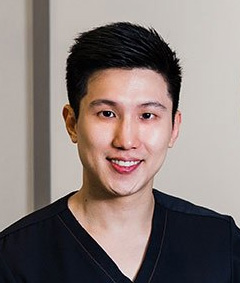It is important to understand the possible side-effects, risks and potential complications of dermal fillers.
This is because dermal filler injections are one of the most frequently used and one of the most effective aesthetic treatments to replace volume lost as we age.
Contents
Are dermal fillers dangerous?
Fillers are generally very safe when they are performed by experienced doctors.
However, there are potential risks and side-effects that you should be aware of.
Despite the low risk, you should be well informed of these possibilities.
What are the potential side effects/ risks/ complications of dermal fillers?
The potential side-effects/ risks/ complications are classified in stages so you know when to watch out for it.
Early (on the first 1-2 days of injection)
Early side effects such as redness, swelling, bruising and pain are physiological reactions to an injected foreign body and they are mild and would generally improve over the next few days without any treatment.
Lumps and bumps and unnatural appearance can result from the use of unsuitable filler, poor injection technique placing the filler too superficially or injection of filler into the wrong area. Overfilling of fillers can also create undesirable aesthetic results. Lip is one area that are commonly overfilled. Occasionally lumps and bumps are more prominent in the first few days and becomes less obvious as the filler integrates with our body tissue. If these ‘unwanted’ lumps and bumps persist, they can be corrected with hyaluronidase in HA fillers or resolves over time. When permanent fillers are used, these lumps and bumps are likely to last for a long time and may require surgical intervention for removal.
Vascular compromise resulting in blindness and skin necrosis happens when the blood vessels (arteries) supplying the eyes or the skin is occluded or compressed by the filler. When vision is affected, the recovery (if any) of full vision is usually not possible. If the affected area of skin necrosis is extensive, scarring is inevitable with the best treatments available. This risk can be minimized with the use of blunt cannula and avoiding injection into the ‘danger zone’ where these blood vessels are identified.
Late complications (2-6 weeks)
Tyndall effect occurs mainly in HA fillers. The tyndall effect is the scattering of light as a light beam passes through a medium. The individual suspension particles scatter and reflect light. As blue light is scattered more strongly than red light, a blueish tinge is seen. This is especially obvious when the filler is placed too superficially over thin that is particularly thin – commonly under the eyes.
Migration and clumping of fillers occurs for many reasons. A filler with low G’, or ‘softer’ fillers tend to spread, while fillers with a high G’ tend to withstand resistance and hold its shape. It is therefore important to use reputable fillers as these manufacturers usually have a range of fillers that suits the specific areas requiring volume. Untested cheap products are more likely to cause such problems. Migration of fillers can sometimes occur when the selection of the product is not appropriate for the area. For example, when the injected area lacks structural support from the surrounding muscles and bones, we would choose a product with a high G’. Clumping of fillers can sometimes happen due to repeated muscle movements. Injection of hyaluronidase can ‘dissolve’ lumps caused by HA fillers but will last a lot longer if a semi-permanent fillers.
Hypertrophic scars are rare. In patients who have a history of keloid and hypertrophic scars may develop scars from placement of fillers. It is important that your doctor is aware of your condition so that necessary precautions can be taken.
Superficial skin infection at injection sites is uncommon when the filler is performed in a clinic, where good clinical practice with the use of disinfecting agents prior and after the procedure and wearing of gloves are in place. Infection of the injection points usually responds well to antibiotic treatments.
Delayed (>6 weeks, may develop after months to years)
Delayed reaction can surface as quickly as 2 weeks. Some patients may experience these delayed effects months or even years later, and the patient often does not remember which filler he/she had been done. Delayed reactions such as bacterial biofilm and granulomas takes a while to develop as the inflammatory nodules grow gradually. They appear as bumps, which grows in size and can cause redness due to underlying chronic inflammation.
Bacterial biofilm and granuloma can present in the same way. However the treatment is very different as the underlying cause is different. Bacterial biofilm is caused by an aggregate of self-encapsulated microorganism which irreversibly adhere to a living surface. The causative microorganism can be bacteria, protozoan or fungi. Such microfilms should be treated with antibiotics and hyaluronidase prior to attempts to remove them. Steroidal injection as the first line of treatment will not be appropriate in treating underlying infection.
Granulomas are formed when the body recognises ‘foreign substances’ and activates its immune system to wall off these substances causing chronic inflammation. Over time, these walls calcify and present as hardened lumps. As HA is very bio-compatible, the risk of a well-established, good quality HA to develop granuloma is extremely low. The probability of granuloma increases when the contents are non-homogenous, in semi-permanent and permanent fillers. Most granulomas improves with treatment, which can take years to treat. Treatment usually involves injection of steroids to modulate the inflammatory response. With HA-induced granuloma in rare cases, injection of hylarunidase helps to metabolise the existing HA that is causing the inflammation. However, in semi-permanent and permanent fillers, this is not possible and new granulomas can continue to form until all ‘foreign substances’ are removed. It is important that the selected filler brand and substance has good clinical evidence to support its safety.
To differentiate a granuloma and from biofilms can be assisted with histological examination of the lesion and imaging with different scans.
Permanent fillers are meant to last forever but this may not always be desirable. I have come across a patient who had silicon nose filler injected years ago (now no longer approved) who finds that the contours are no longer as natural as the underlying bone has been resorbed. One option would obviously be to place more fillers to replace the lost volume. However, the risk involved is high considering the site of injection and the possibility of triggering a granulomatous lesion which is common with silicon fillers.
I have had fillers done before. Does that lower my risk of developing problems?
In fact, NO. It is common that patients today demand for repeated filler injections in the quest for physical perfection. It is possible that the risks of granuloma formation are higher when different combined substances are injected into the same area.
However, it is common practice to use HA fillers of different consistencies to ‘layer’ and provide the best aesthetic outcome. When the HA fillers are stabilised with the same technology i.e. of the same brand, the risk of cross reaction is negligible.
Therefore, it is important to communicate with your doctor all implants and aesthetic procedures previously performed with specific mention of the type and brand (if you can) of fillers that has been performed.
How can I reduce the risk of fillers?
Go to only certified, experienced doctors
An experienced doctor will be able
- Discuss with you alternative treatments and advise if you actually need a placement of fillers
- Take a relevant history to take necessary precautions
- Perform fillers in a clean and aseptic manner
- Using safe injection techniques and equipment with relevance to facial anatomy
- Recognise and treat complications appropriate and promptly when they do arise
- Follow post-injection instructions closely
Use only approved products.
- Do not buy fillers online
- Do not go for deals that are too good-to-be true.
- Do not proceed if you are not sure of the type and brand of filler used. A good clinic will give you sufficient information and time to do your research before committing to any treatment.
Are hyaluronic acid (HA) fillers safer?
Hyaluronic acid (HA) filler is the most common used filler today. The unwanted effects are less permanent and are usually reversible and temporary.
It has gained popularity over the years as the least invasive form of rejuvenation with a semi-permanent result. HA is naturally occurring in our body and it is slowly broken down by our body as we age. It takes about 12 months for HA fillers to metabolise.
Collagen and Collagen stimulating fillers triggers a low-grade inflammation that stimulates collagen production and there is increased risk of granulomatous reaction which can last for a long time. Results are sometimes less predictable too as the collagen stimulating ability differs from person to person.
Permanent fillers such as polyacrylamide and polyalkylimide gels can result in permanent side effects, which may need surgical correction.
Generally adverse effects of fillers last for as long as the desired effects. There is a general misconception that temporary fillers rarely provoke side effects, however the frequency is probably comparable to semi-permanent and permanent fillers but their duration is shorter and hence they are less serious.
Filler complications are not common but they can be very serious. It is important that you seek treatment in a trustworthy clinic where the doctors are well-trained and the best products are used.





